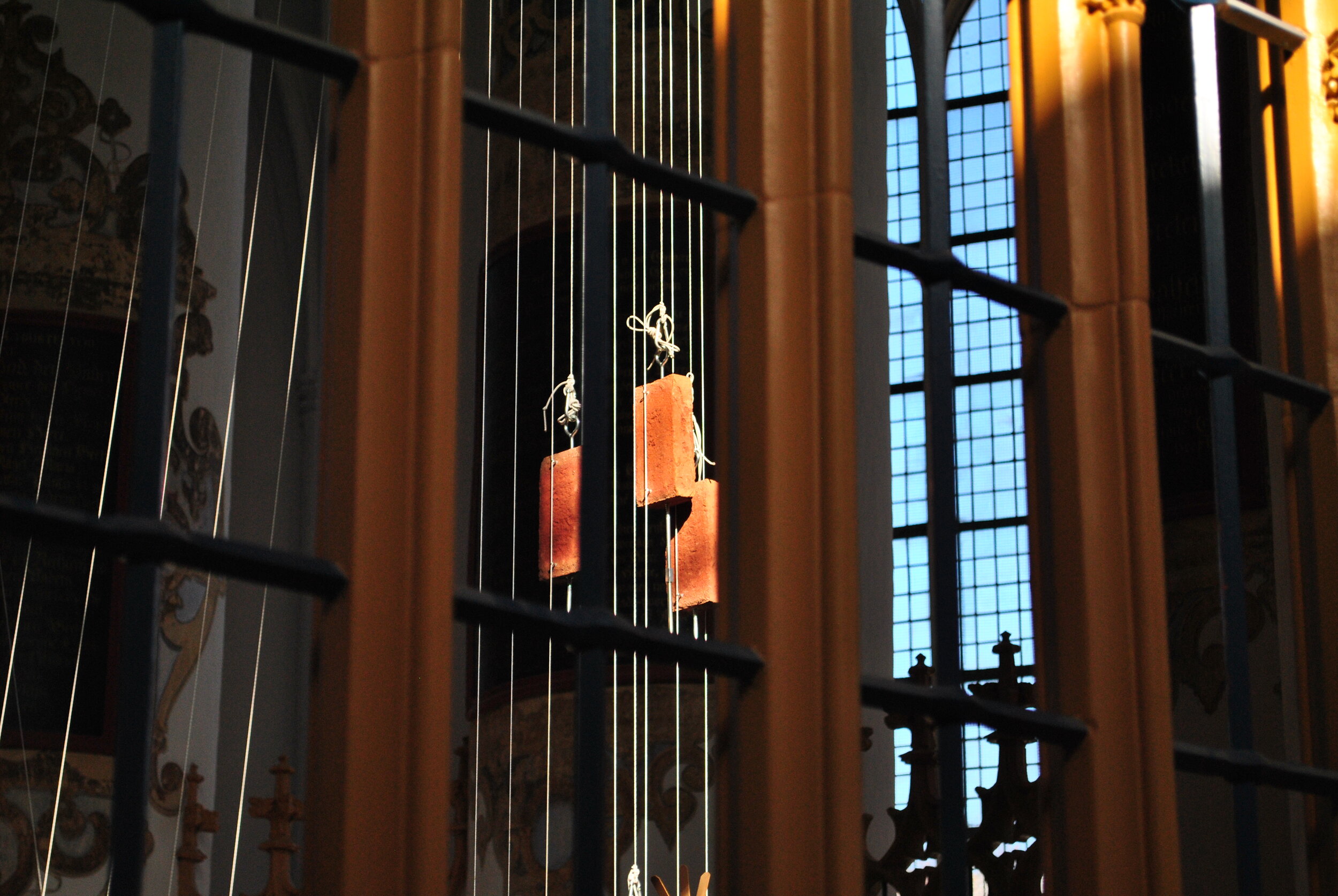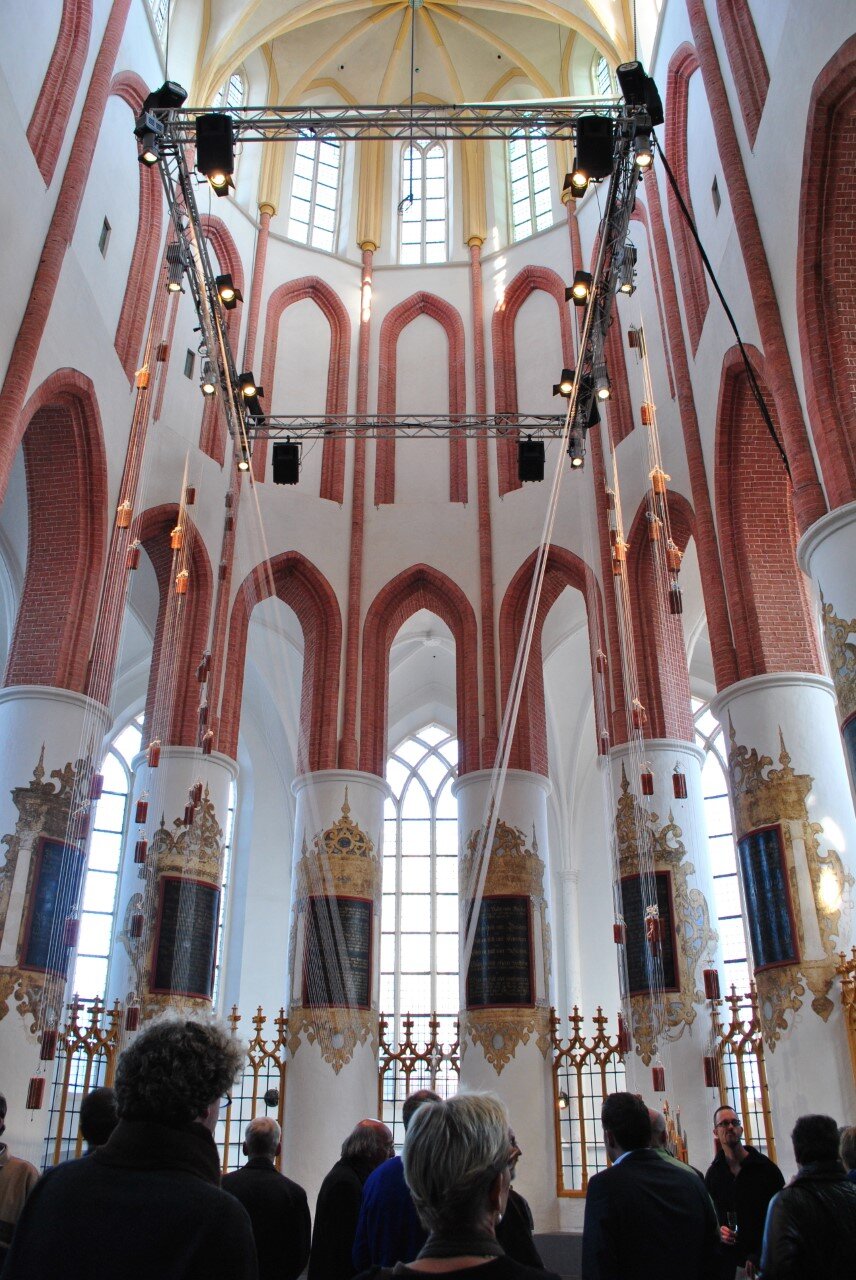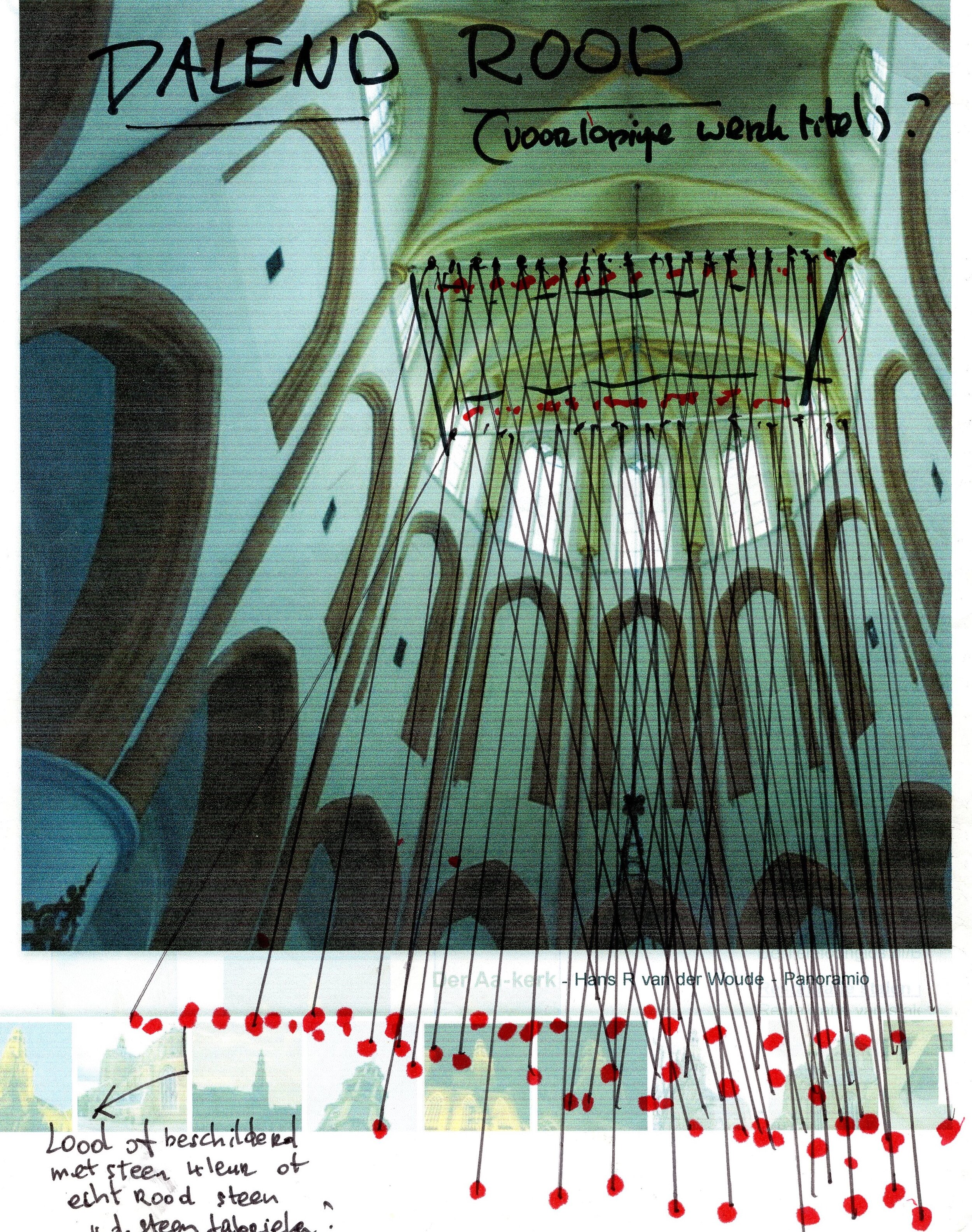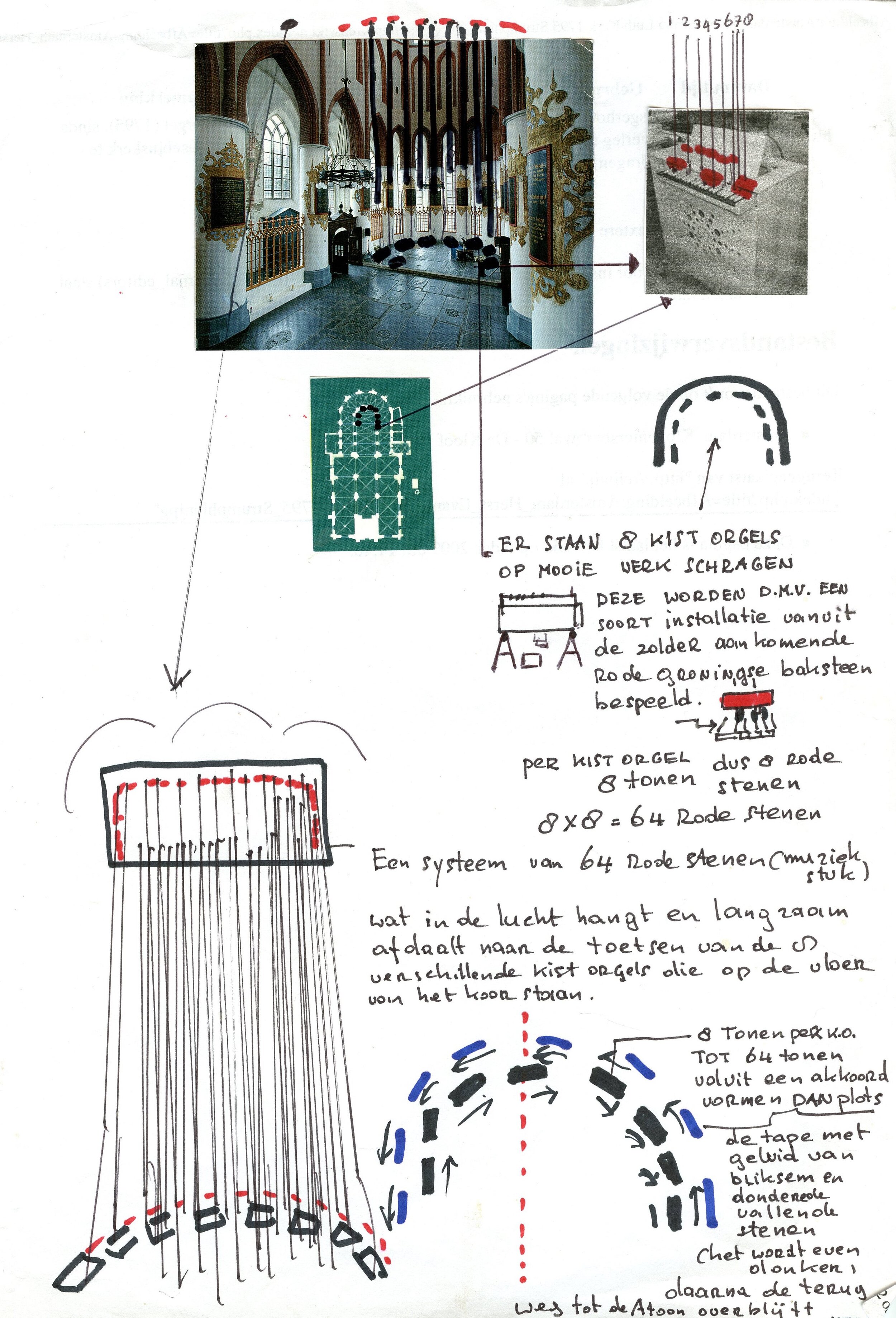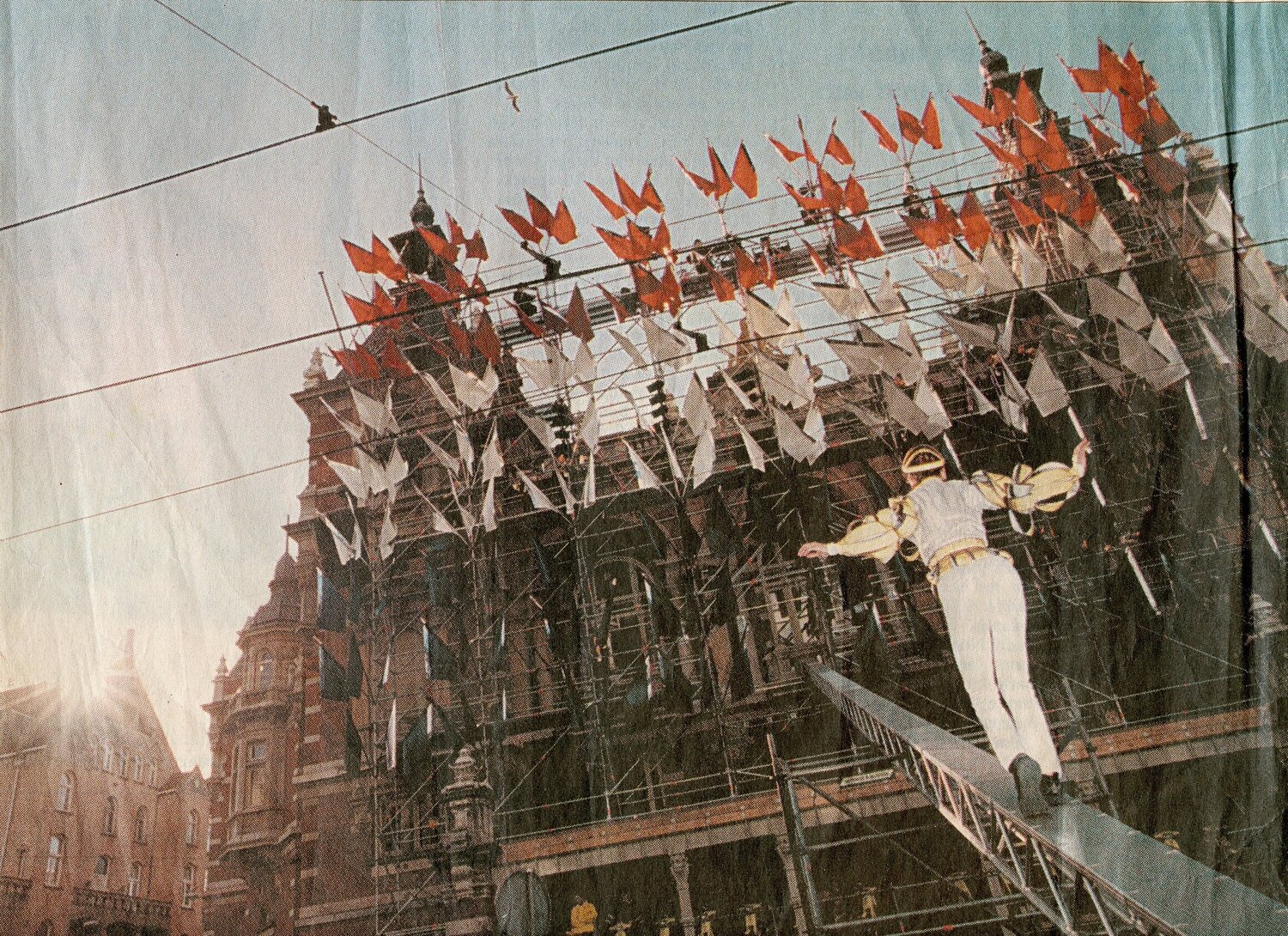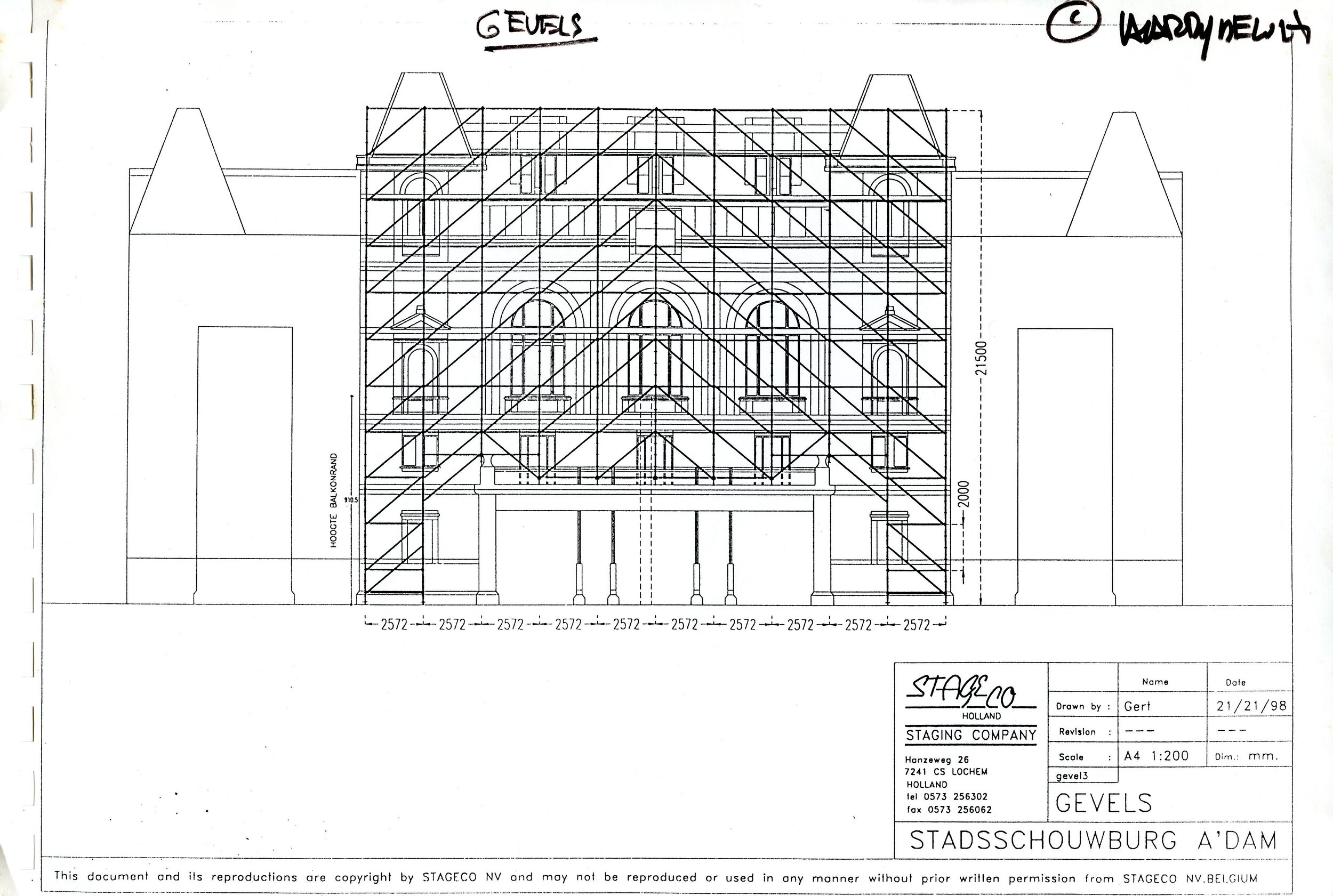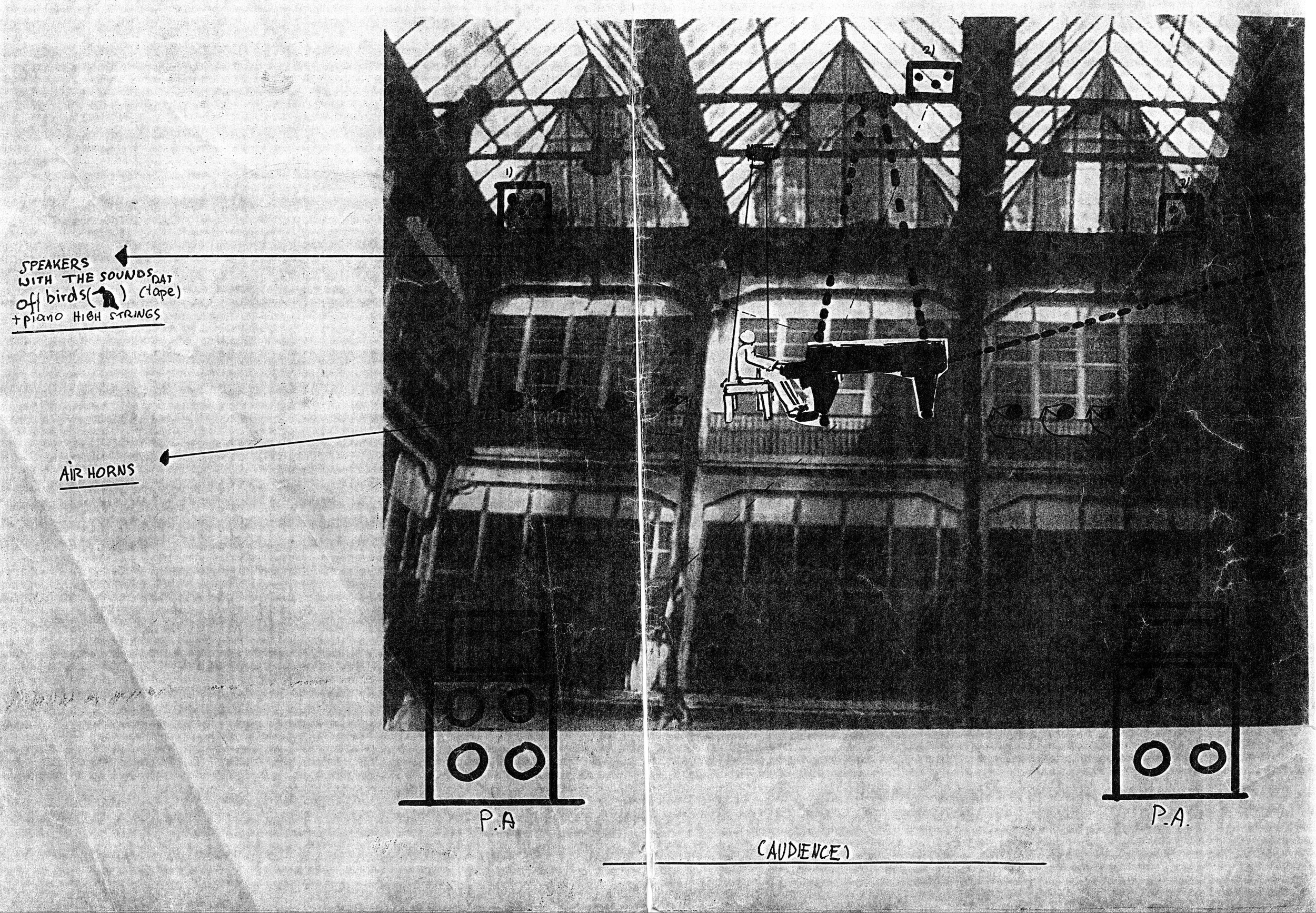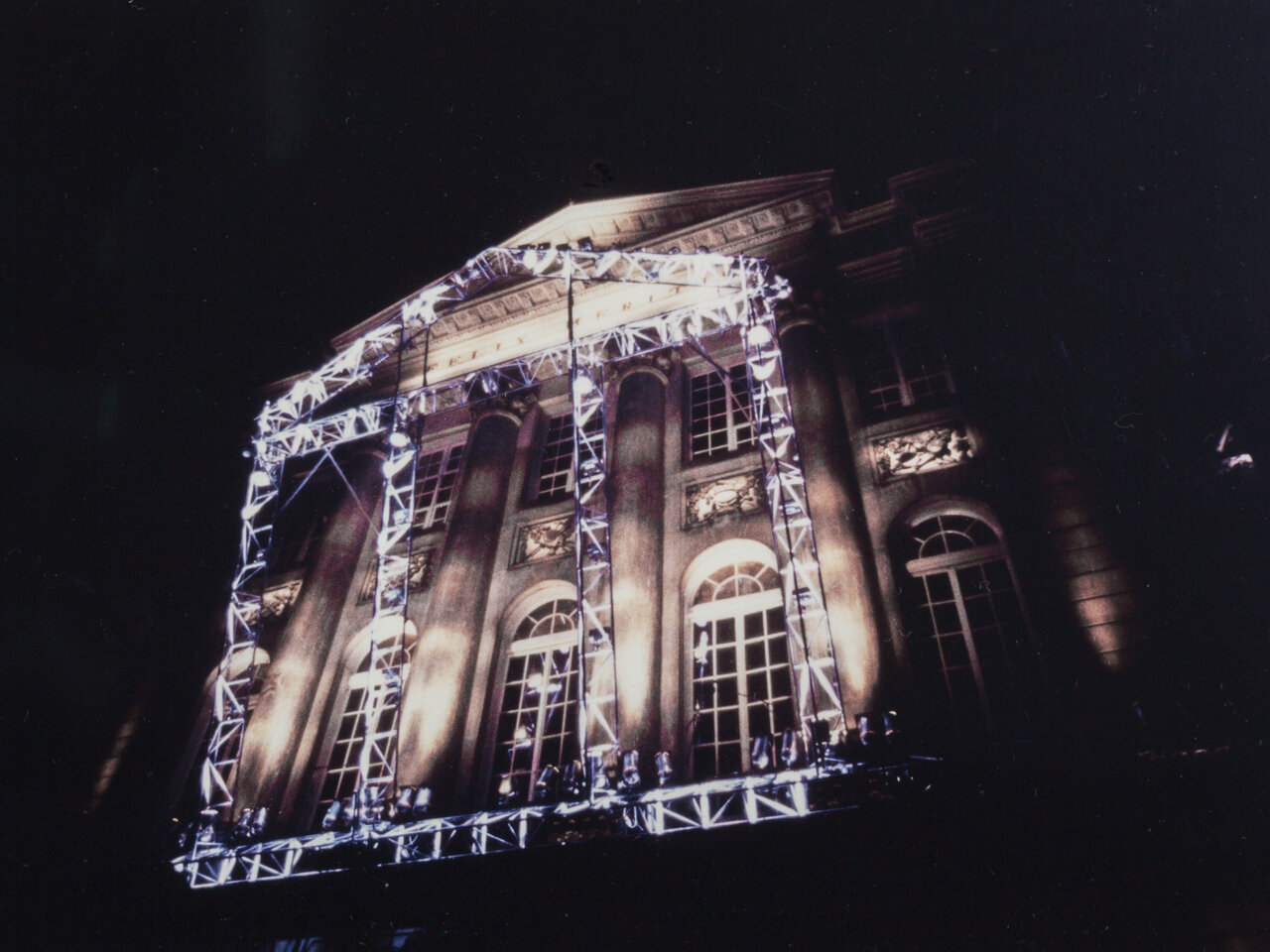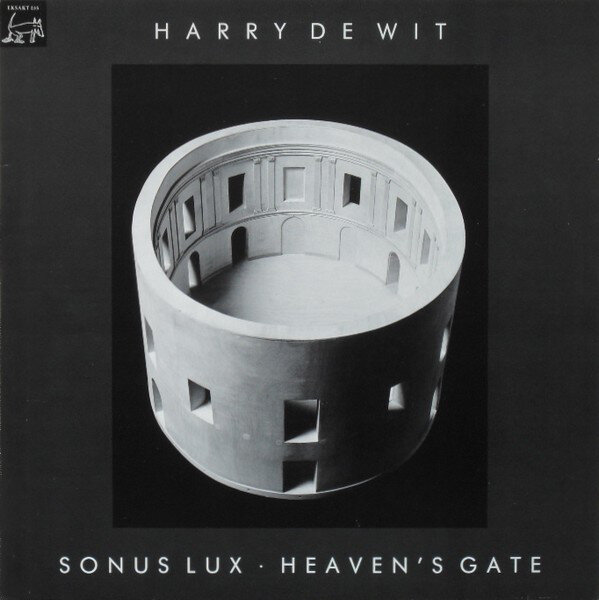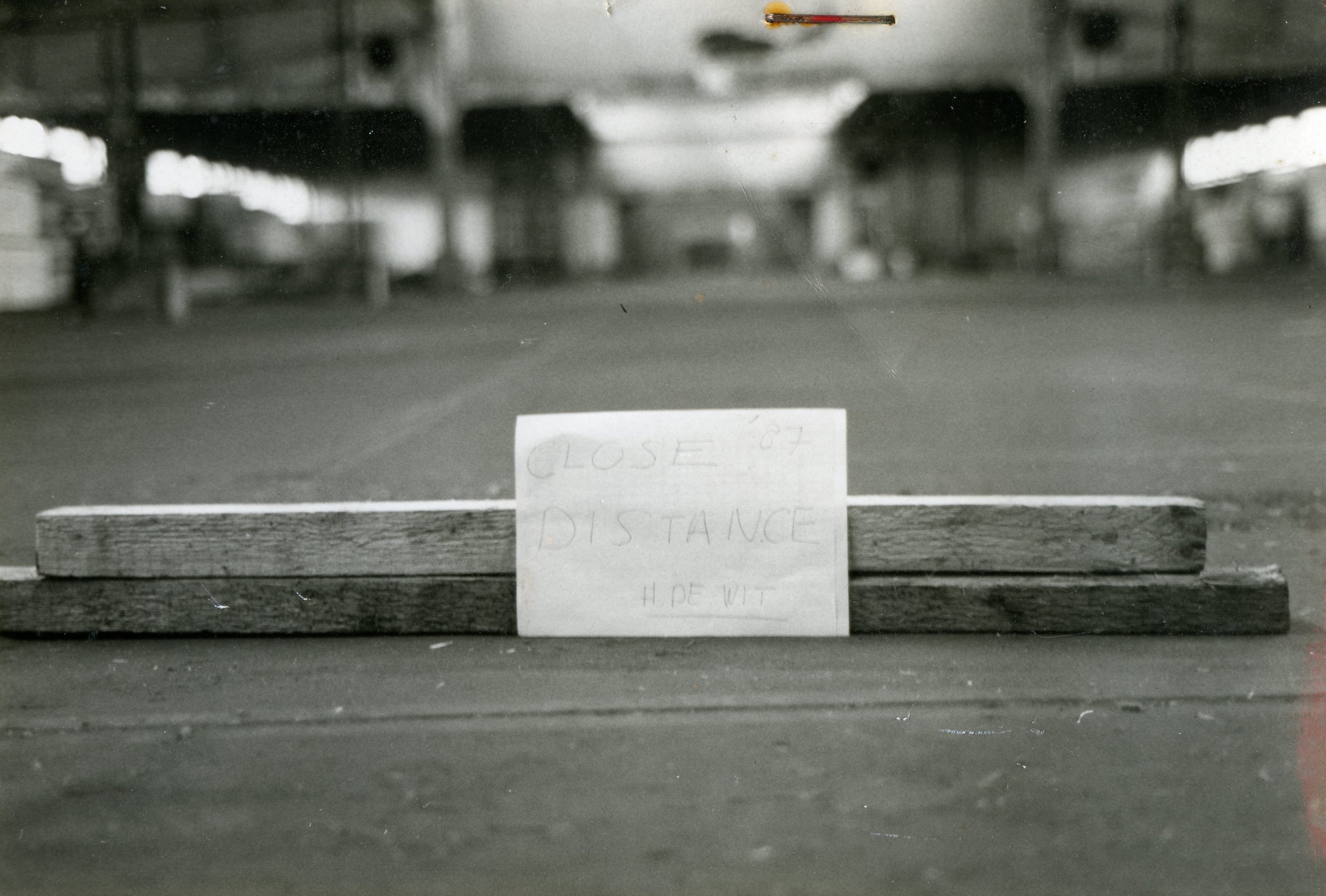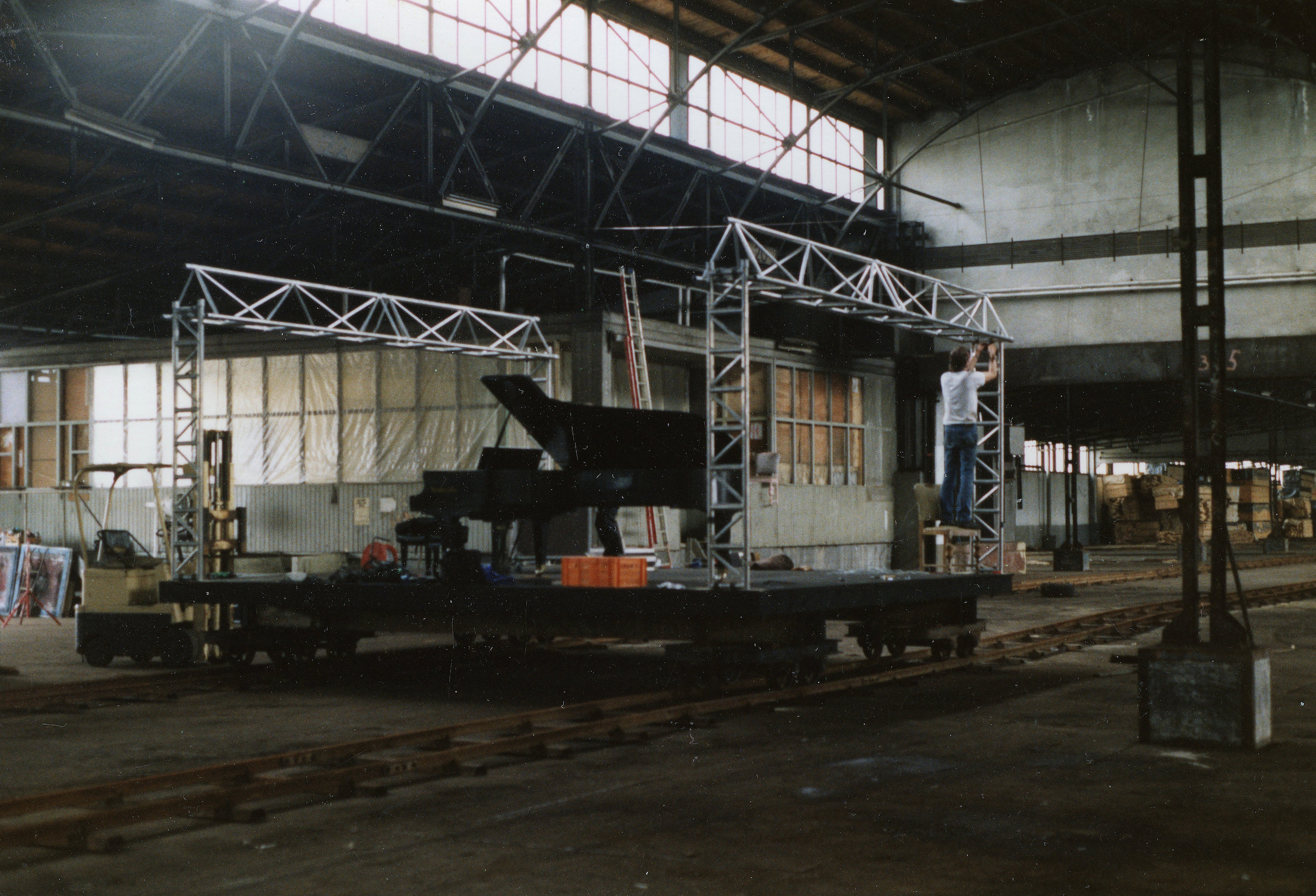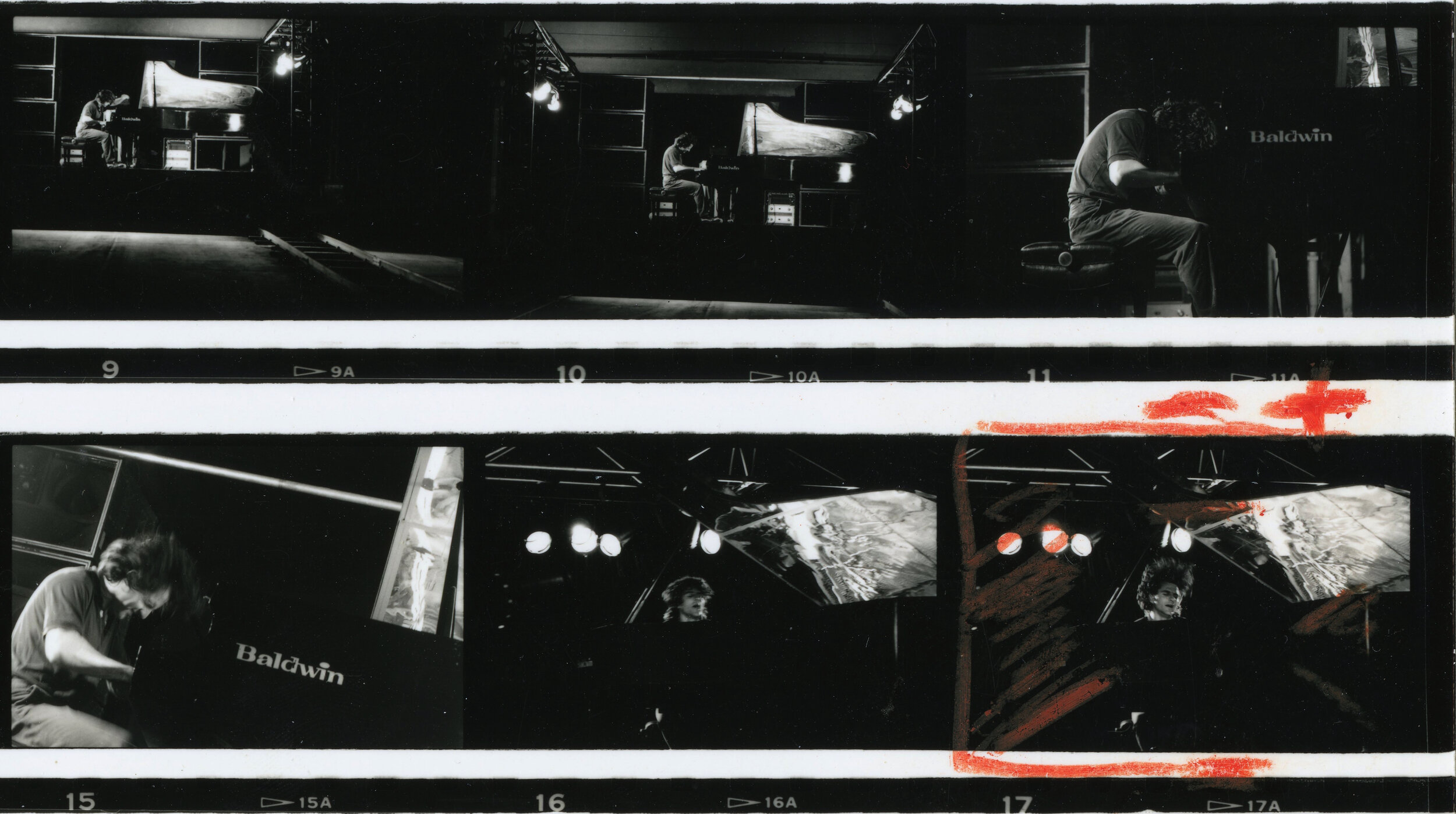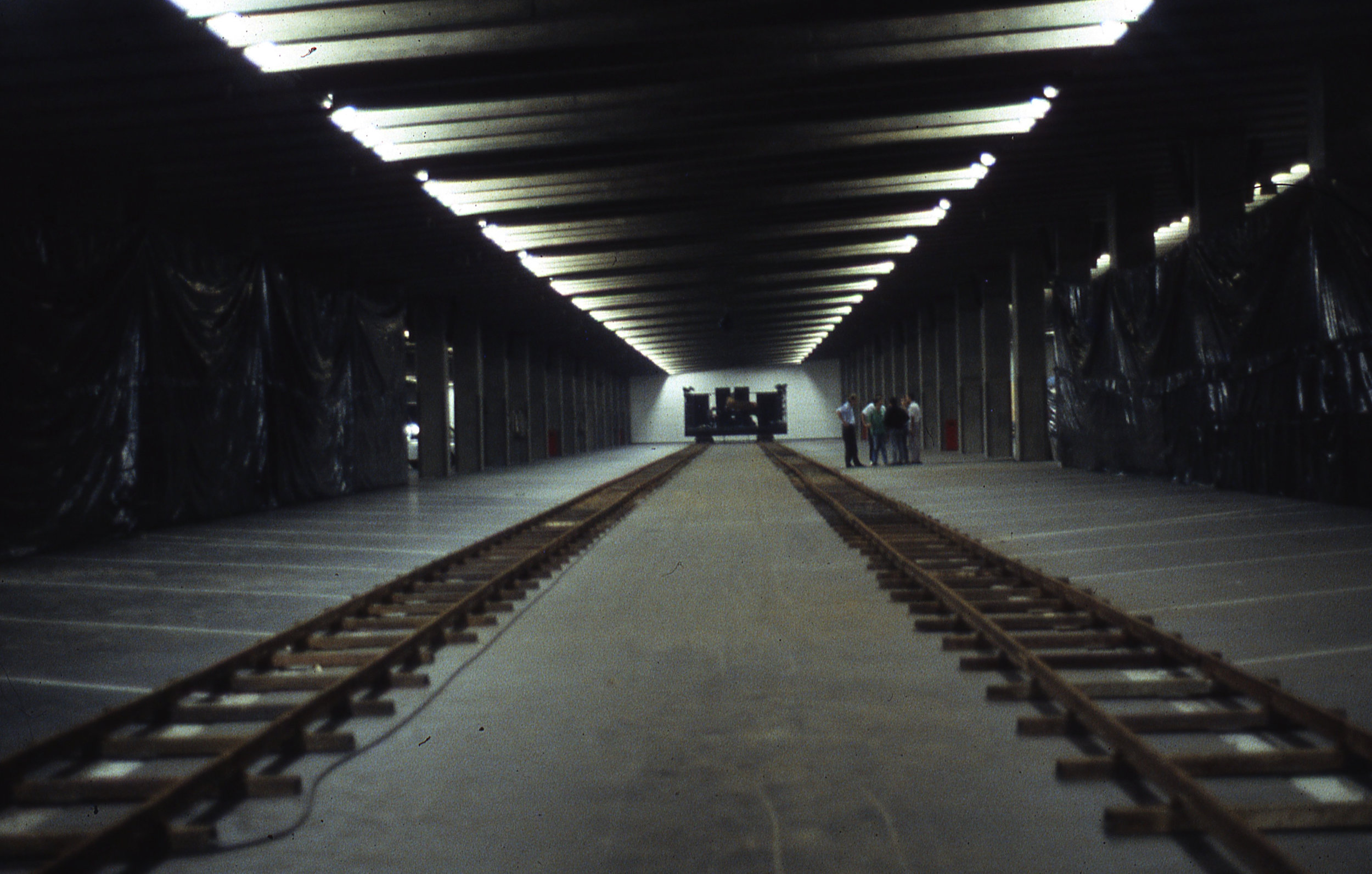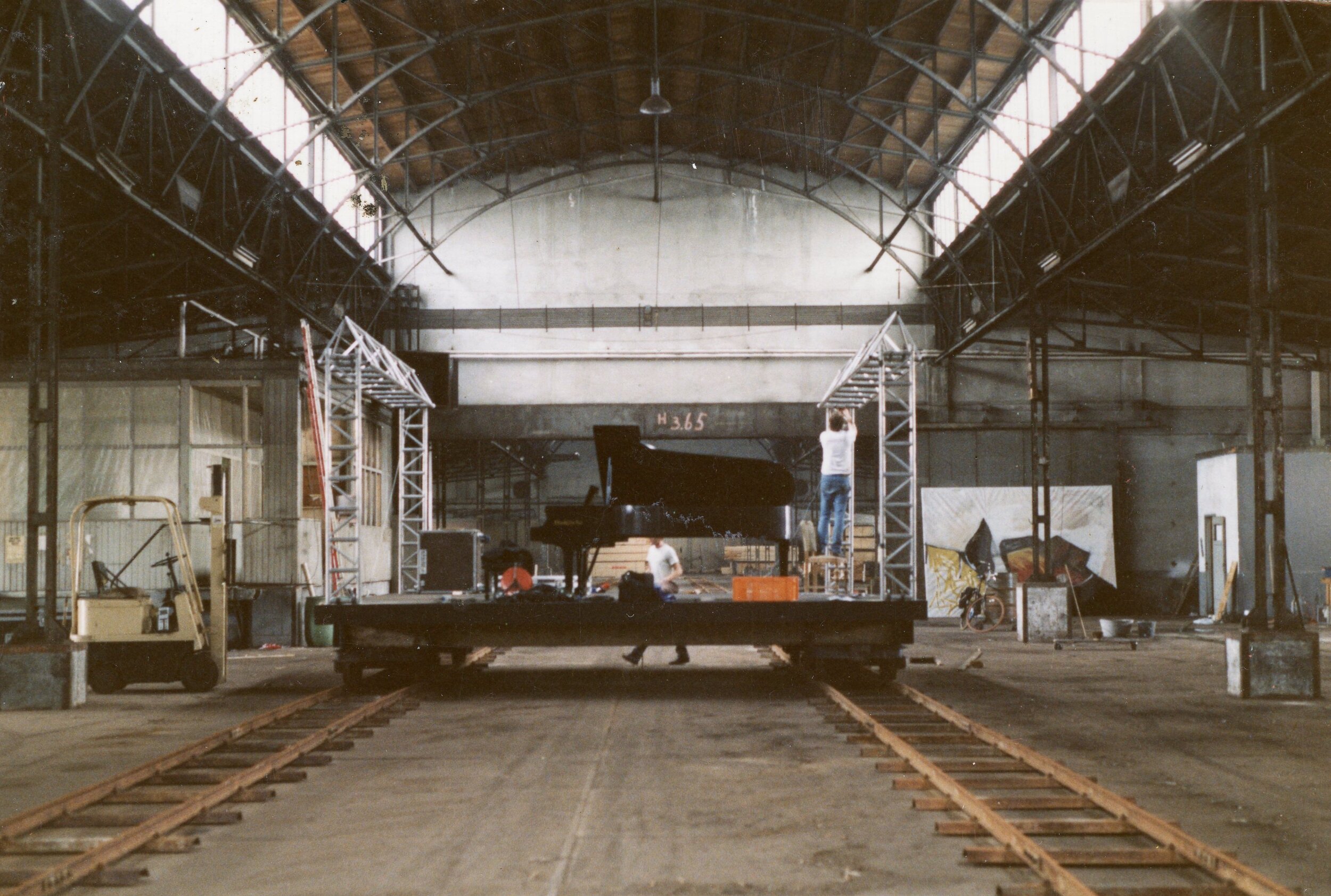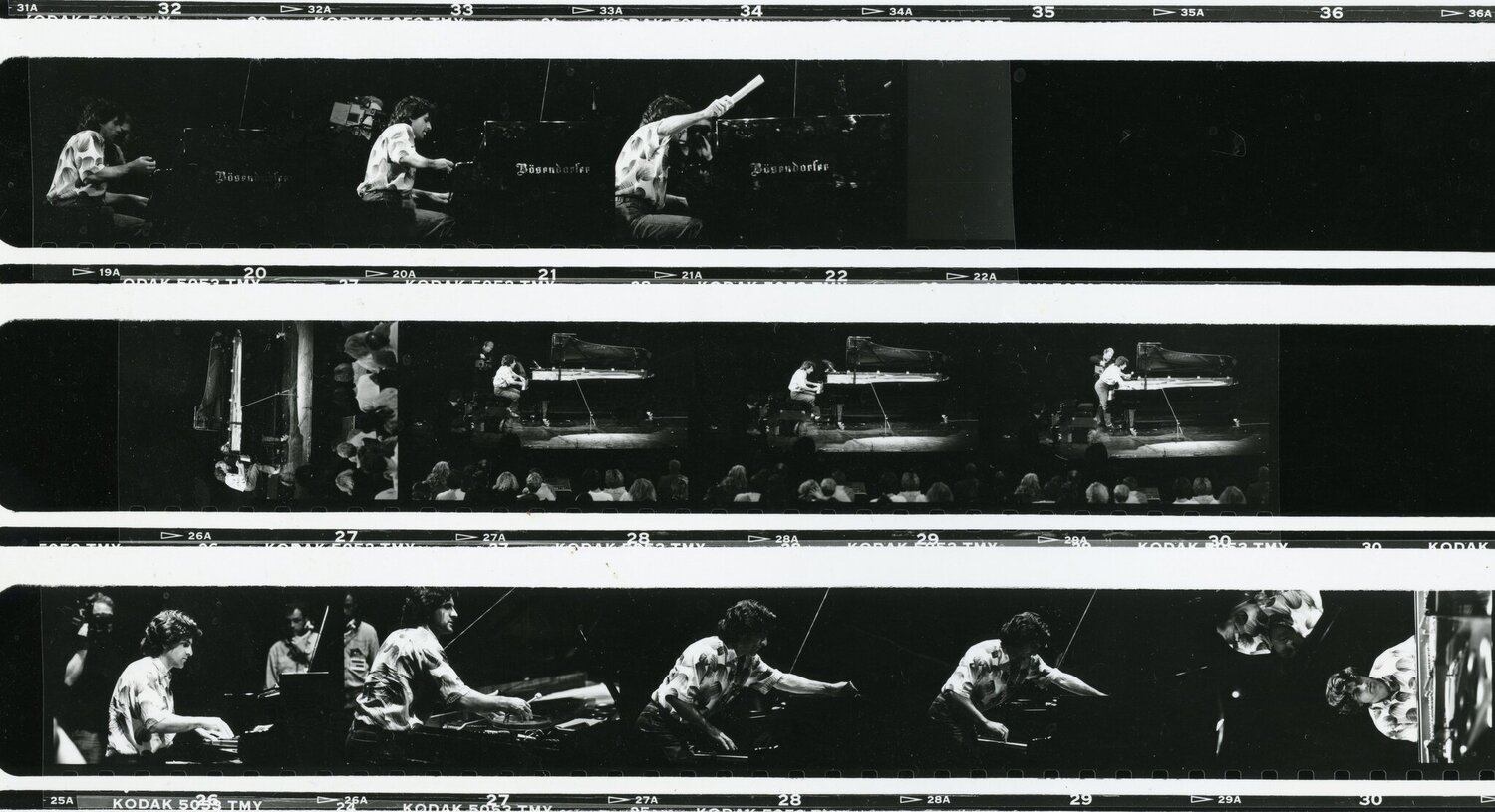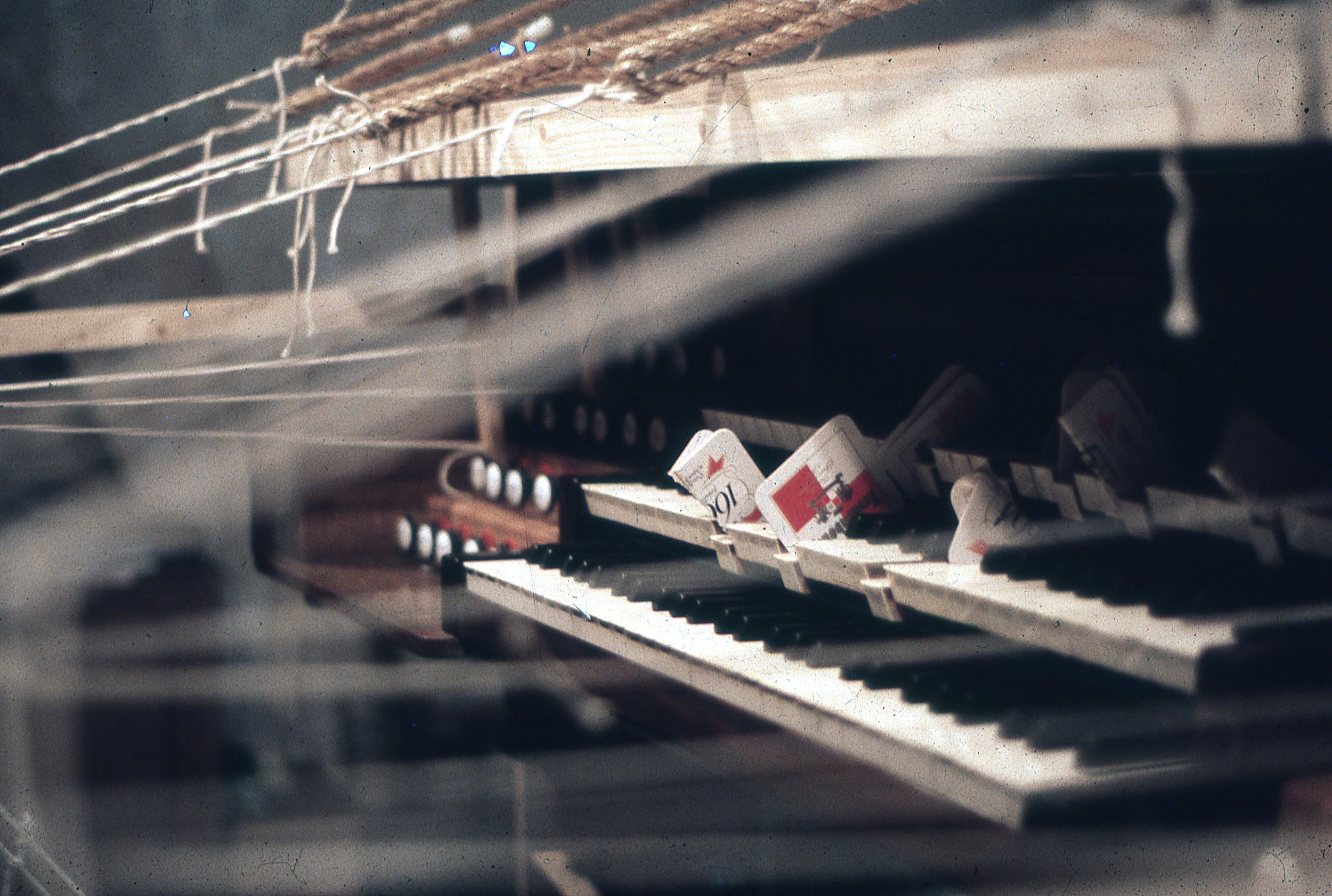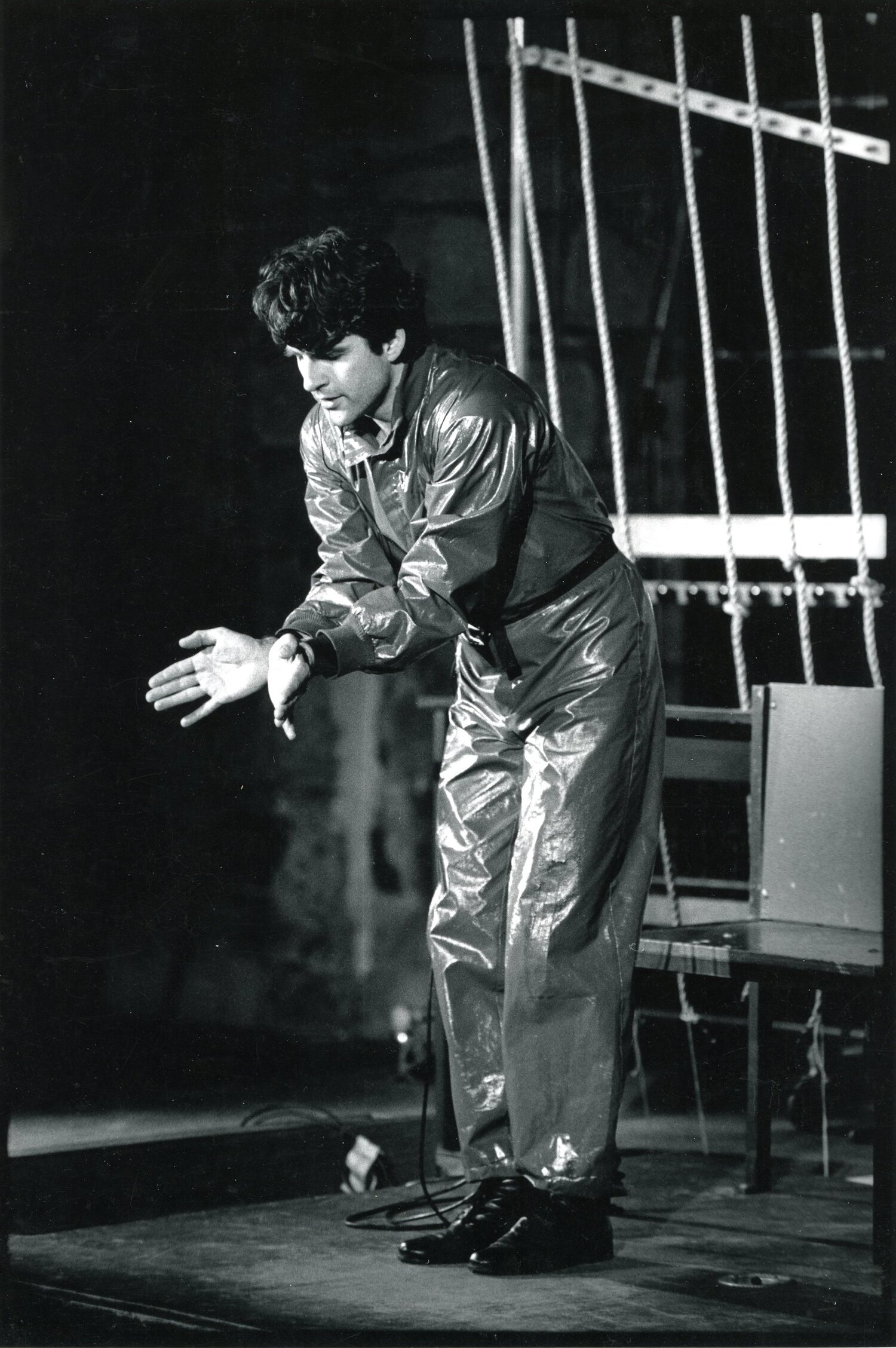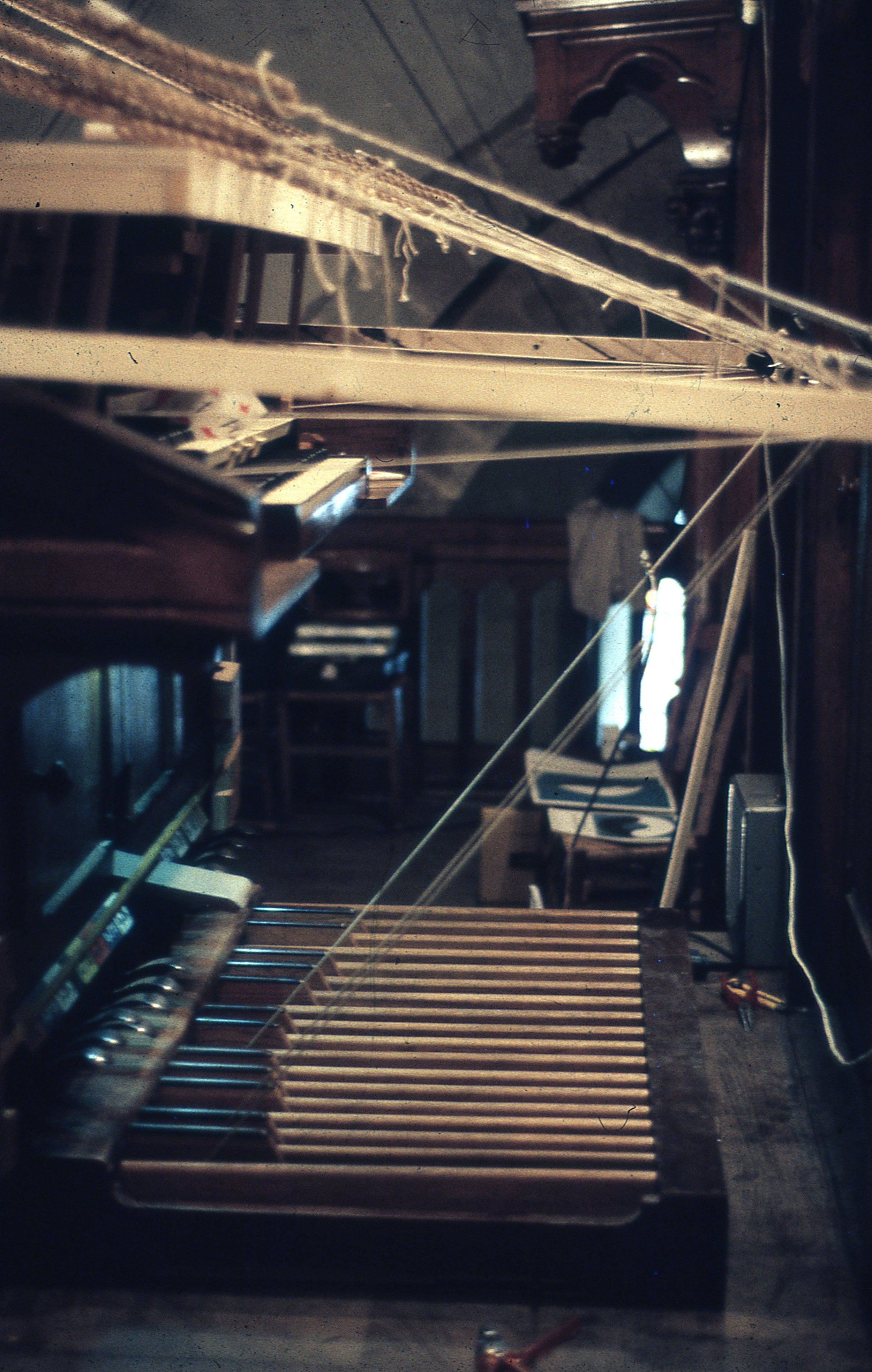
Installations
Besides composing music for dance, film and theatre, special location projects and installations also make up a part of Harry de Wit’s body of work.
A selection of projects can be found below:
Breathe()red
with darya von berner
Tschumipaviljoen Groningen, 2015
The reflective qualities of the Tschumi Pavilion are used in an optimal way in ‘Breathe()Red’ by Darya von Berner and Harry de Wit. The project is realized with 650 meter red ‘light tape’. This tape is glued on all glass edges of the Interior of the Pavilion. By means of special software it is programmed so that the glowing and dimming of the light is controlled. This is done on the basis of a sound design, specially composed composed for the occasion by De Wit. The result is a symbiosis between the Tschumi Pavilion and the refined image & sound sculpture.
Dalend rood
Der Aa-Kerk Groningen, 2011
During a residency at the Sounds of Music festival in Groningen, the Netherlands, De Wit developed an installation in the famous Der Aa-church. The installation consisted of a construction of organs, bricks and rope, making the weight of the stones create sound, resulting in an impressive sound experience.
Zingend rood
Tschumipaviljoen Groningen, 2011
Parallel to Dalend Rood De Wit installed Singing Red in the Tschumipaviljoen. For this purpose, six rotating glass discs were placed on a glass cymbal in the aisle of the pavilion. The discs cut the strings of the cymbal, making a singing sound audible. Piano strings are attached to the strings of the cymbal that are stretched over the entire length of the pavilion.
VALLEY OF DESOLATION
Mergelgroeve ‘t Rooth, Margraten, 2005.
During the Musica Sacra festival, De Wit developed Valley of Desolation in a huge marl pit in the hills near Maastricht. It began in the growing darkness of the twilight. People wondered around encountering different performance elements, sometimes at quite a distance. Live whispering/singing by Alan Belk – at times through a megaphone – of texts from Dante to Shakespeare, was combined with recorded sounds of owls and the tolling of bells, and with the playing of medieval wind instruments and odd sound makers such as an old alarm siren and an aqua phone. The audience was to enter the valley of desolation in which they would meet both ‘injured demon’ Lucifer (the performing composer) and the angel (singer Alan Belk) trying to soothe the devil. The rural area, the darkness, and the huge, imposing surroundings of the rising walls of the pit, combined with echoing, sometimes sinister sounds and the chanting of lines made for a dramatic performance.
GEVELS
Leidseplein Amsterdam, 1998
In 1998 De Wit opened the 51st edition of the Holland Festival in Amsterdam. Using the facade of the Stadsschouwburg Amsterdam as a back-drop, he arranged a piece with several instrumentalists, vocalists, dancers and 35 pizza-delivery scooters.
SONG FOR THE PIGEONS
Karlsruhe, Germany, 1993
Song for the Pigeons was written especially for the Zentrum Für Kunst und Medientechnologie in Karlsruhe, located in an old munition factory. For the occasion De Wit had a grand piano hoisted up 25 meter in the air, up to where the pigeons were, from which he played a prepared piano concert.
SONUS LUX
Shaffy Theater, Amsterdam, 1987
SONUS LUX is the result of a collaboration between Jeffrey Shaw, Harry de Wit and Felix Meritis (architectural setting and the bearer of the image in terms of content). A large-scale sculpture in sound and light was installed on the building's front which literally spotlit and made audible the form of the neo-classical facade in its construction: half-columns, architrave and stucco decorations. New technological possibilities translated the concept of 'Son et lumière' into a contemporary artistic total project. Light and sound functioned on different levels, thanks to a dynamic computer-controlled image and were influenced by the presence of spectators.
Transparent acoustic panels mounted to the exterior walls of the building made up an element of Sonus Lux. By putting an ear against these panels, passersby could hear music playing as if it were emanating from the walls themselves. In this way the installation suggested that one was listening to the acoustic memories of the Felix Meritis building, because over its 200-year history numerous concerts had been performed there.”
SONUS LUX was realized for the Felix Meritis 1787-1987 festival commissioned by Shaffy Theater.
credits:
Simon Limbrick: musical director, marimba, midi mallet instrument, snare drum, bass drum, timpani, AKAI S900, roto toms, cymbalo.
Elise Lorraine: voice, accordion, 'slagharp', 'lange snaar', pipe organ.
Ingrid Perrin: cello
Jeffrey Shaw: visual art
Harry de Wit: musical composition, piano, clarinet, bass clarinet, electric guitar, pipe organ, celesta (soprano), cymbalo.
Jos Zwaanenburg: flute, alto flute, bass flute, piccolo.
Close distance
Harbour Amsterdam, 1987.
Gulbenkian Foundation garage, Lissabon, 1988.
In an old warehouse in the harbour of Amsterdam and later in the garage of the Gulbenkian museum in Lisbon, De Wit made a composition for prepared piano. Sound, light, acoustics and image work together dynamically while a grand piano slowly moved closer to the audience starting far away in the space.
L’EGLISE ELECTRIQUE
Rennes, 1988.
For the Festival des Arts Électroniques, in Rennes, France, De Wit created a piece with a prepared church organ.
CONCERT POUR CENTRALE ELECTRIQUE
Rouen, 1985.
In the Rouen power plant, De Wit staged a physical battle between the individual and the omnipotence of machines. With a specially developed instrument, the "vonkentafel", De Wit made rhythmic short circuits in which sparks burst from the workbench. High above De Wit and the audience, a number of musicians played thin lines of music on rotating reels.


